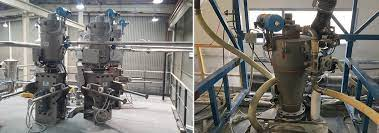Dewatering is the process of separating liquids from solids. The most common example of dewatering is in a solid waste facility, where sludge from a municipal sanitary sewer system separates waste water from solid wastes.
The process is used in a number of industries, including mining, lumber, farming, biohazard and some construction industries. It is even used in some food preparation applications such as juice or cider manufacturing and wine making.
Advantages of dewatering include decreased cost of shipping waste to landfills, because drier components will necessarily weigh less. In other industries, the solid cake is used to make additional products. A third reason may be environmental concerns, and poisonous wastes can be separated from non-hazardous materials.
Several types of processes can be used for dewatering, often with the use of expensive equipment:
Belt Press Filter- A slurry of liquids and solids is fed into a large feeding hopper and is run on a series of conveyor belts. As the sludge is transported through the belts, gravity will allow some of the liquid to pass through filters to a bottom trough. The remainder will be squeezed through filters and the solids are carried to the opposite end of the press. Large Belt Press Filters can process several hundred gallons per minute;
Plate & Frame Press- In this method, semi-solid material is run through a series of plates covered with a porous filtration material. The plates are constructed in a recessed fashion to allow for collection of the slurry. Liquids will pass through the porous materials and then through a series of filters. Solids are collected on the filtration material. The material can then be removed, scraped of solids and reinserted into the press chamber;
Centrifuge-Semi-solid material is pumped into a large rotating drum. Operating like a large washing machine, the bowl spins rapidly and centrifugal force moves the slurry to the walls of the drum. Liquids escape through the perforated holes in the wall of the bowl and solids are collected on the walls.
Every industry may use a different process, depending on the volumes to be separated, the composition of the slurry and other factors. The problem with dewatering process is the cost. The equipment used in each process is large and expensive. For those businesses that may only need a dewatering process periodically or smaller operations the equipment can be cost prohibitive.
Fortunately for those companies, there are dewatering equipment rental companies available in every state. Equipment can be transported on site through flat bed trailers and set up in closest proximity to the slurry. Rental eliminates the need for a major equipment purchase and limits operating costs to an as needed basis. Additionally, the rental agent can lend expertise to the company. The agent of reputable companies will inspect the substance to be dewatered, its volume and then recommend the best equipment to suit the lessors needs.



